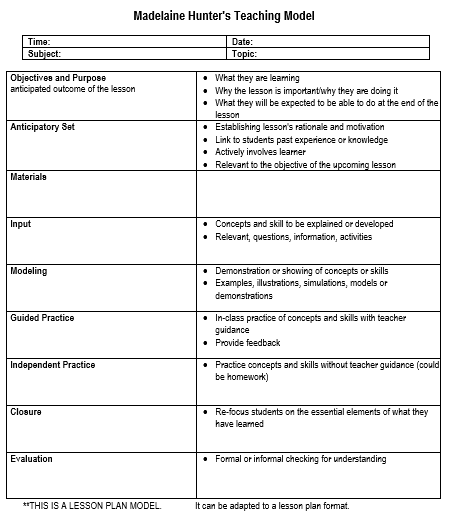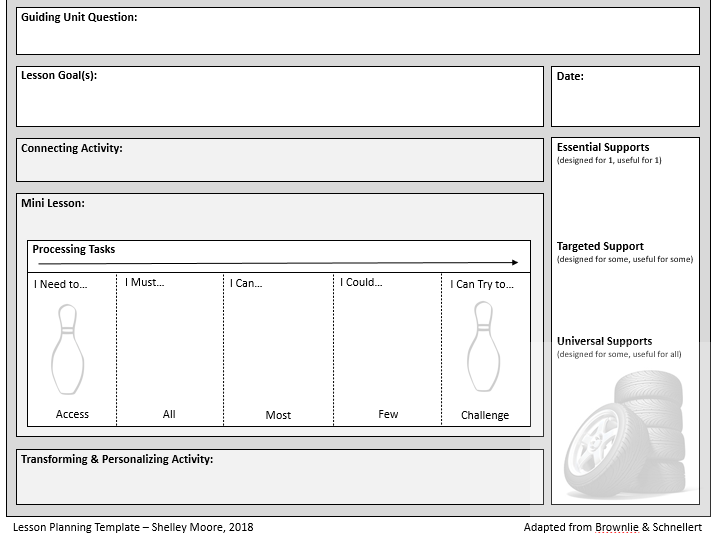For my third goal in my e-portfolio, I decided to create a lesson and unit plan template that I could use and adapt for my upcoming practicum (as well as future teaching and assignments).
To begin, I started by taking a look at the previous lesson and unit plans that I had made. While these plans varied quite widely in terms of format, one consistent aspect that I liked was a double column for teacher cues alongside a description of each activity. I noticed that this was featured most prominently in my P.E and math lessons, which followed more of a directed “step by step” teaching style.


Next, I began to research other templates. The UVic Teacher Ed website and library guide provided a wide range of samples and tabled layouts. On Shelley Moore’s blog, I discovered a fantastic section that offered links related to assessment – learning maps, planning guides and leveled support documents. Some components that I really liked and wanted to incorporate were dedicated sections for Universal Design for Learning (UDL), specific student supports, and staggered tasks (actions that all, most or few students could complete – connected to possible extension activities).
Summary of actions taken:
- Examined previous templates used in method classes and teaching scenarios
- Researched various templates from across the web that include all required components (e.g. Big ideas, competency connections, FPPL, assessment)
- Identified extra components I would like to include
- Choose one or several templates that will be combined to create my own template
- Created my own templates (that may be adapted as I begin my planning for practicum)
A hyperlinked a copy of the unit and lesson templates I have created using the information gathered can be viewed below:
Professional Growth – Connections to BCTF Standards
For this goal, I have addressed the standard: “5. Educators implement effective practices in the areas of planning, instruction, assessment, evaluation and reporting.” By researching, adapting, and creating my own lesson and unit templates, I have gained a deeper understanding of the importance of applying intentional thinking when planning for teaching episodes. Throughout this process, I have considered methods for incorporating critical components such as essential questions, curriculum connections, and assessment strategies to guide my instruction in a way that makes my thinking clear to both myself, my mentor teacher and my supervisor. Working on this goal has also led me to reflect on my ability to plan for different abilities in my lessons and units. Examining Shelley’s blog and her samples focusing on integrating elements of Universal Design for Learning and levels of support has taught me about the diverse approaches for including adaptions in your planning. I have learned that creating a baseline, or point of access, for all learners and then creating scaffolds or extensions is one way to ensure that all students are considered and supported. Creating editable versions of these templates enables and encourages me to make changes in my practice – once I start gathering and organizing resources for my practicum, I can adjust my templates according to specific subjects, particular learners or needs. For example, once I have a more thorough understanding of the students in the class, I will be better equipped to identify any additional components that I should add to my plans. Furthermore, I could create a modified for version for when I teach – e.g. adding widened margins for teaching points, or shortening sections to only include essential information.






Comments by leona